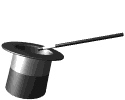|
Irvine Valley College Marjorie C. Luesebrink, M.F.A., Professor // Literature 47 -- Fable and FolktaleResearch Paper Help Page 4 Shaping a Thesis
Although narrowing your topic will assist you in organizing your paper, as you continue your research, you will want to think about a Thesis Statement. The Thesis Statement will provide the reader with a clear, concise idea of the intent of your paper. It should be one sentence, contain all the important words about your idea (that is, if it were to stand alone, the reader would know what the paper was about), and should make a statement that requires support. I would suggest that you start with a tentative Thesis Statement and revise it as you go along. Let us return to our examples to see how a Thesis might evolve. In the first example on the Selecting a Topic page, we saw that Irish Fairies could be narrowed to a topic like the Dullahan. A little bit of research on this topic would show that the "headless horseman" theme shows up in the tales of other cultures and has many of the same hallmarks where-ever it appears. However, there is a span of research that is required with any subject to begin to see how a good Thesis Statement might be shaped. It is important that you have enough information about your topic to see both a general picture of the extent of the tale and the specific motifs or tale types that are represented in the version you have chosen. If, for instance, we had taken Hanlon's Mill as our focus tale, we might have noted that it conformed to the general description of the "headless horseman" that announces sudden death. We would also have noted that the legend seems to have its origin in pre-Christian Ireland - associated with pagan traditions and perhaps an older, Latin tradition. We see that the past, tradition, and memory are important in these tales - and in the outcome for the characters in the tales. There is a quote in the story: "Old Hanlon was a man that had great knowledge of all sorts; there was not an herb that grew in the field but he could tell the name of it and its use, out of a big book he had written, every word of it in the real Irish karacter. He kept a school once, and could teach the Latin; that surely is a blessed tongue all over the wide world; and I hear tell as how "the great Burke" went to school to him."
Another story, "The Headless Horseman," actually tells quite a different tale - a reckless and sturdy rider is befriended by the Horseman and wins his race. "Charley Culnane," says he, "you have a stout soul in you, and are every inch of you a good rider. I've tried you, and I ought to know; and that's the sort of man for my money. A hundred years it is since my horse and I broke our necks at the bottom of Kilcummer hill, and ever since I have been trying to get a man that dared to ride with me and never found one before. Keep, as you have always done, at the tail of the hounds, never baulk a ditch, nor turn away from a stone wall, and the headless horseman will never desert you nor the old mare." So. what we can see about these tales is that the "Moral" of the tale differs - the "horseman" usually has the same characteristics, but depending on what happens in the story, he can bring sudden death or serve as a warning to the populace, or re-enforce old-fashioned ideals and values. Here might be a tentative Thesis Statement:
Now, of course, you would be able to look closely at each of three or four tales to locate the meaning or moral that seems to be indicated in the story - that is, why does the death messenger come, who does he approach, and what is the outcome for the community (community is very important in the Irish versions and even in Washington Irving's tale)? At this point, you will be looking carefully at the TEXT of the folk tale for concrete detail - and this is the heart of your research paper. We can see more of how this shapes the paper itself in Writing Workshop.
Our second example was The Tortoise and the Hare. A visit to D.L. Ashliman's pages on "unequal contestants" reveals that he has collected several different tales of this genre from many countries:
As we would continue research on this topic, we would begin to see what specific morals do turn up in tales from many lands. These "examples" are meant to give you an idea of how to proceed, regardless of your story selection or theme. In every case, however, I will be happy to assist you with Shaping a Thesis for your own Topic - and your colleagues on the discussion list will be able to suggest other stories and resources for your particular quest! Go on to Writing
Workshop
| ||
|
Table of Contents for Research Help Section Marjorie C. Luesebrink, MFA Fable and Folktale Literature 47 Contents: About Your Class / Class Syllabus / Lecture Notes / Reading List / Recommended Reading / Assignments / Resources and Web Sites / Grading Policies / Contact Your Instructor |



